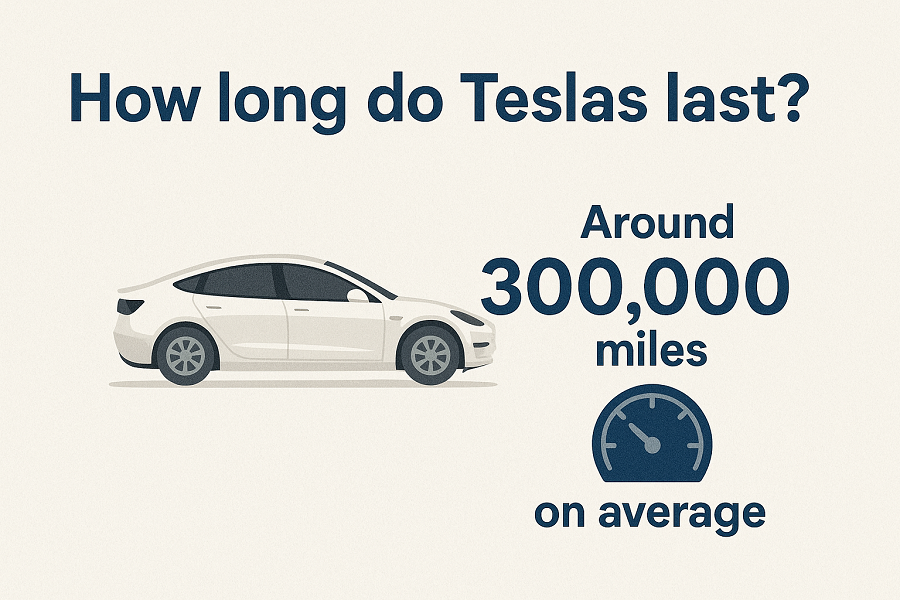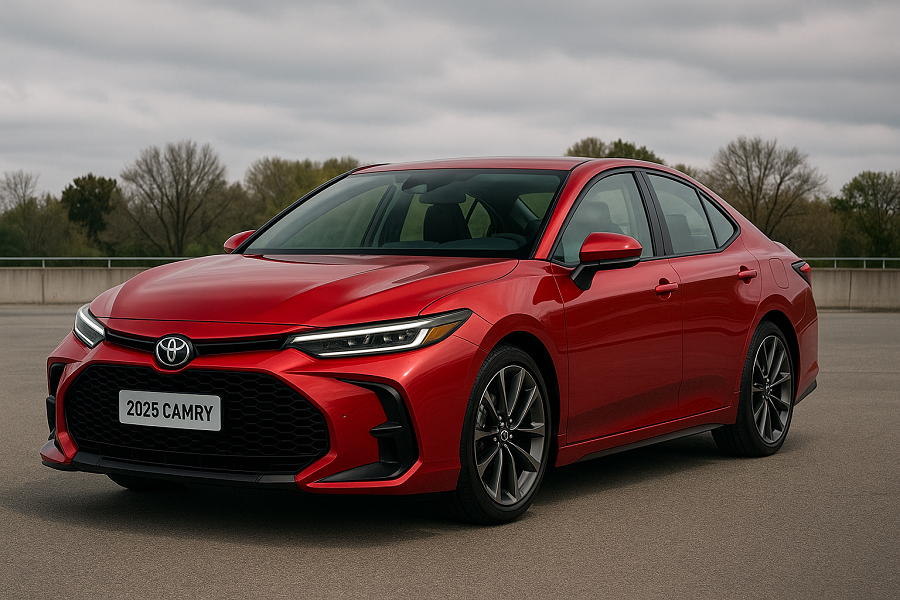Introduction
Tesla vehicles are known for their innovation, speed, and sustainability—but How long do Teslas actually last? Whether you’re considering a new Tesla or wondering how your current one will age, battery life and overall vehicle longevity are key concerns. From battery degradation to mileage milestones, understanding Tesla’s lifespan can help you make smarter ownership decisions. In this guide, we’ll explore how many miles and years Teslas typically last, how battery health changes over time, and what you can do to extend their life. Let’s find out if Teslas truly stand the test of time.
What’s the Average Lifespan of a Tesla?
On average, a Tesla can last between 300,000 to 500,000 miles, which is around 20 to 25 years for most drivers. Tesla’s electric motors are built for durability, and their batteries are designed to hold up well over time. Real-world data from high-mileage Tesla owners supports this. While battery degradation does occur, it’s usually slow and manageable. With proper care, a Tesla can easily outlast many gas-powered cars and offer long-term value.
Tesla Battery Lifespan Explained
Tesla batteries are engineered to last, using lithium-ion cells with advanced chemistry. Most Tesla models use NCA (Nickel Cobalt Aluminum) or LFP (Lithium Iron Phosphate) batteries. The average Tesla battery lasts around 1,500 charging cycles, translating to 300,000–500,000 miles depending on driving habits. Factors like temperature, charging habits, and software management influence how long a Tesla battery will last. Unlike gas engines, these batteries lose capacity gradually—not suddenly—making them reliable for long-term use.
How Much Range Do Teslas Lose Over Time?
Battery degradation is a natural part of EV ownership, and Teslas handle it well. Most owners report just 10–15% battery degradation after driving 100,000 to 200,000 miles. Range loss depends on charging habits and climate. For example, frequent Supercharging or extreme temperatures may speed up wear. On average, a Tesla Model 3 might lose about 1% of range per year, which is minor compared to the overall lifespan. Monitoring your Tesla’s battery health is key to long-term performance.
Tesla Maintenance: What Keeps Them Running Longer?
One reason Teslas last long is because they have fewer moving parts than gas cars. There’s no engine oil, spark plugs, or fuel filters to worry about. Routine software updates, tire rotations, and occasional brake servicing (due to regenerative braking) are the basics. Keeping your Tesla updated and scheduling regular checkups helps extend its life. Clean charging ports and maintain tire health to get the most from your vehicle. Proper maintenance equals longevity.
How Tesla Warranty Covers Battery and Drivetrain
Tesla offers solid warranties that reflect its confidence in long-term durability. Most models come with an 8-year battery and drivetrain warranty, varying slightly by model and mileage limits. For example, the Model S and X are covered up to 150,000 miles, while the Model 3 and Y offer 100,000–120,000 miles. This warranty protects against manufacturing defects and excessive battery degradation. It gives peace of mind and shows Tesla’s commitment to long-term ownership.
Tesla Battery Replacement: When, Why, and How Much?
While Tesla batteries are built to last, some may need replacement after extensive use. Most owners don’t need a replacement before 300,000 miles, but if needed, the cost can range from $12,000 to $20,000, depending on the model. Warning signs include a sudden drop in range or failure to hold a charge. Battery upgrades or third-party services can reduce costs. Still, battery replacement is rare and often not needed during normal vehicle lifespan.

What Impacts Tesla Longevity the Most?
Several habits influence how long your Tesla lasts. Regular use of fast chargers (Supercharging), frequent full charges, and driving in extreme weather can shorten battery life. Cold weather, for instance, may reduce range temporarily but doesn’t cause permanent damage. Keeping the battery between 20% and 80%, avoiding deep discharges, and using scheduled charging can improve battery health. Regenerative braking also reduces brake wear, helping the car last longer.
High-Mileage Teslas: Real-World Owner Stories
Many Tesla owners have driven well beyond 200,000 miles with minimal issues. For instance, a Model S owner in Europe reported over 400,000 miles with only one battery replacement. In the U.S., rideshare drivers often exceed 300,000 miles using Model 3s and Ys. These high-mileage stories show how durable Teslas can be when well maintained. Online forums and Tesla communities are full of examples proving their long-term reliability.
Comparing Tesla Lifespan to Gasoline and Hybrid Cars
Traditional gas cars often last 150,000 to 200,000 miles, with major engine repairs along the way. In contrast, Teslas can exceed this with fewer moving parts and lower maintenance costs. Hybrids offer more efficiency than gas cars but still rely on internal combustion. Tesla’s electric drivetrain simplifies longevity by eliminating many wear points. Over 10 years, Teslas often prove more cost-effective and reliable than their ICE (internal combustion engine) rivals.
Does Model Type Affect Tesla Lifespan?
Yes, different Tesla models show different performance in the long run. The Model S and Model X often last longer due to larger battery packs and premium materials. Model 3 and Model Y are newer but already show strong reliability. Some Model 3s use LFP batteries, which have longer cycle lives and better durability when charged to 100%. Driving habits and care ultimately matter more than the model itself.
How to Maximize the Life of Your Tesla
Want your Tesla to go the distance? Stick to good charging habits—keep levels between 20% and 80% for daily use. Avoid frequent fast charging, especially in hot weather. Use scheduled charging and preconditioning in extreme climates. Don’t ignore software updates, as they optimize battery usage and efficiency. Regular checkups and gentle driving habits help extend the life of both the battery pack and mechanical components.
Common Myths About Tesla Longevity
Some people still believe that EV batteries only last five years—but real data proves otherwise. Another myth is that Supercharging ruins your battery. While excessive fast charging can speed up wear, occasional use is perfectly safe. Some also think Teslas aren’t built to last as long as gas cars, but owners hitting 300,000+ miles show this isn’t true. Myths often stem from early EV fears—not facts.
Future Outlook: Will Newer Teslas Last Longer?
Tesla is working on next-generation battery tech like the 4680 cell and structural battery packs, which promise better efficiency and longer life. LFP batteries used in some newer Model 3s and Ys also offer extended durability with full-charge flexibility. Elon Musk has even mentioned a million-mile battery goal. As Tesla evolves, so does the lifespan of its vehicles—making future models even more reliable.
Final Thoughts: Are Teslas Built to Last?
Tesla vehicles are not just smart—they’re built to last. With proper care, many owners report hundreds of thousands of miles without major problems. Thanks to fewer moving parts, software enhancements, and strong warranties, Tesla proves its value over time. Whether you’re buying new or used, Teslas offer long-term reliability and excellent cost-per-mile returns. They’re not just a trend—they’re a long-term investment.


